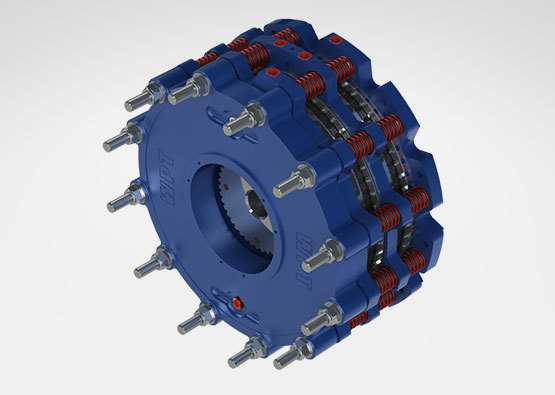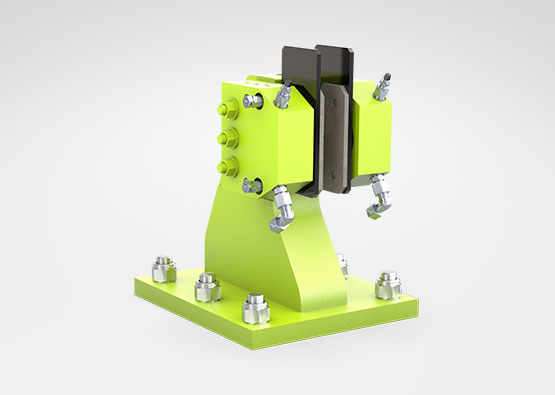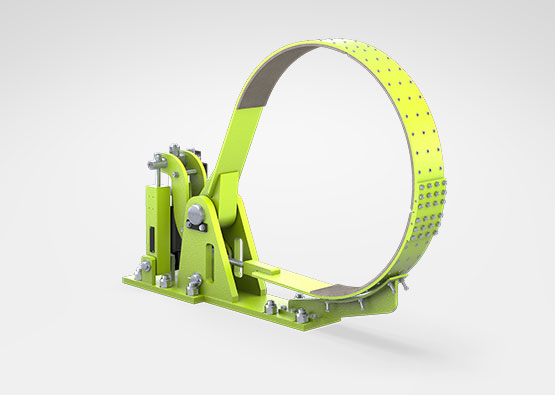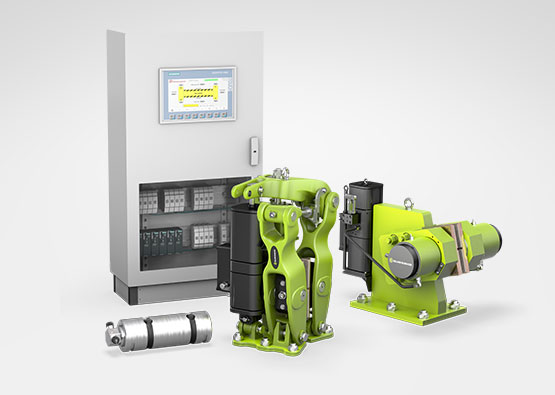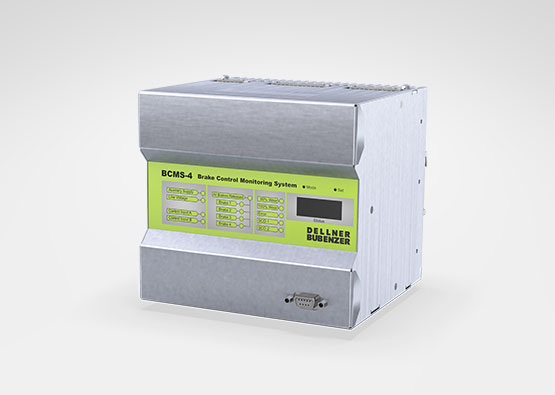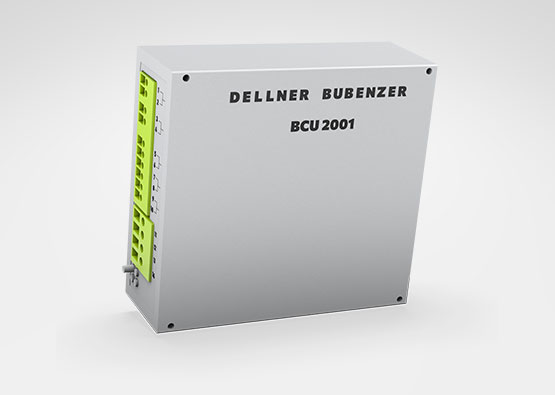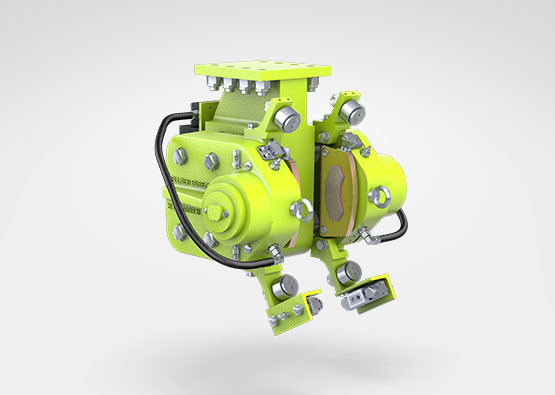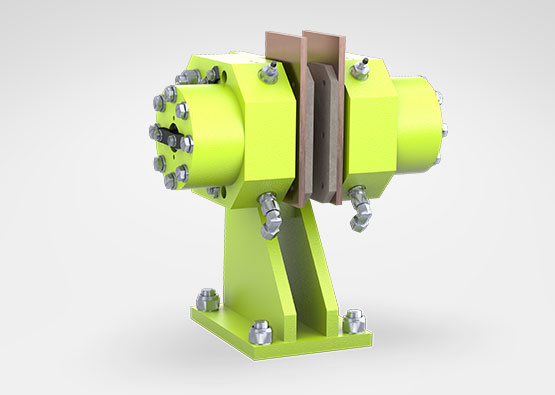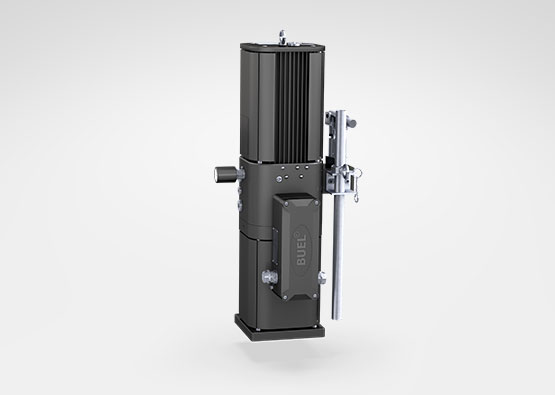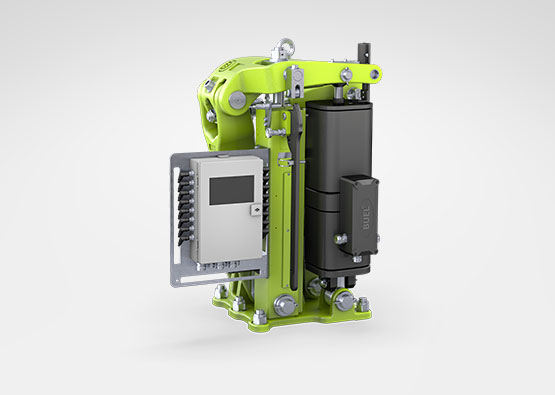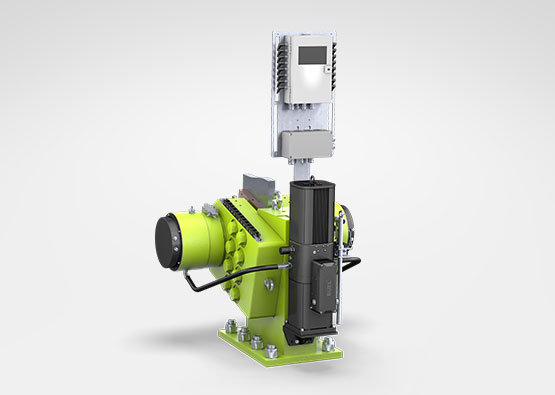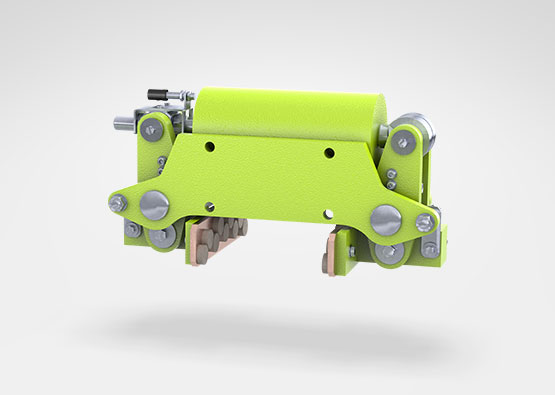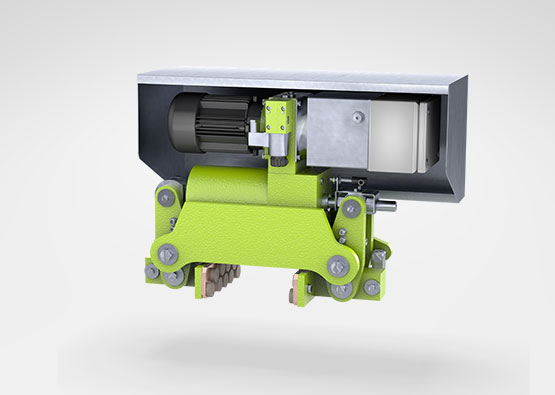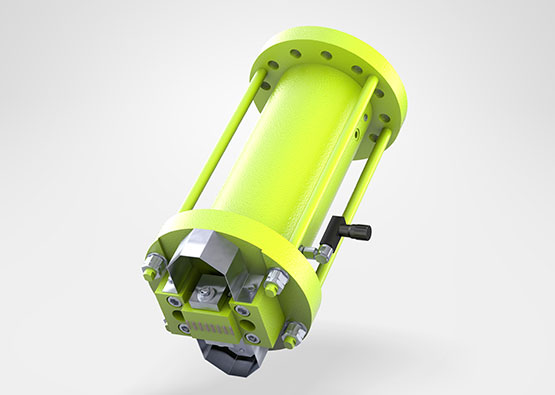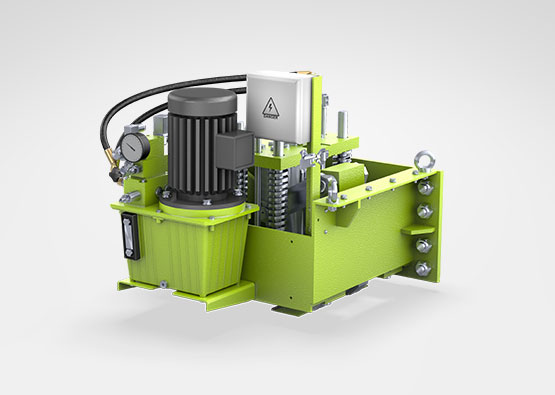WPT Water Cooled Brake
WPT® water cooled brakes (WCBs) are high energy absorbing solutions used as dynamic tensioning and static holding brakes. They are especially suited for severe high-heat braking applications where heavy duty constant slip tensioning is needed. The brakes are air actuated and cooled with a continuous flow of coolant from either a closed or open loop cooling system – and the design of the internal water flow and copper alloy wear plates allows for greater heat dissipation. The air tube design is corrosion resistant and requires no special coatings or treatments and field service is simple and error free. In addition, Retrofit kits are available to convert an existing single or dual piston actuated WCB to air tube actuation with no other modifications required.
- 1,2,3, or 4 plate construction
- Corrosion - resistant air tube actuation method
- Removeable shims for easy wear adjustments
- Standard mounting hole pattern for retrofitts, rebuilds for OEM applications
- O-ring design allows for fast, easy, field service
- Durable neoprene air tube ideal for harsh operationg enviornments
- Interchangeability: Eaton Airflex ® WCB, WCBD Water Cooled Brakes
Additional PRODUCTS
- All
- Caliper / Disc Brakes
- Components & Accessories
- Couplings
- Drum & Band Brakes
- Hydraulic Systems
- Locking Devices
- Monitoring & Control Systems
- Motor Mounted Brakes
- Pneumatic Drum Clutches & Brakes
- Stop Turn Lock Systems
- Storm Brakes (Rail & Wheel Brakes)
- Thruster / BUEL®
- Wind Turbine Components
- WPT Disc Clutches & Brakes
DELLNER BUBENZER's Anti Sway Systems allow the damping of head-block, spreader and container oscillation generated by acceleration / deceleration of trolley and gantry.
The BAC-brakes is used for stopping and/or holding of fans, blowers, wind turbines, coilers, crane slewing and travel gears etc.
Band Brake for large torque applications that can be used for emergencies or back up braking needs. Band Brakes have been around for many years and we offer many ways to operate via thruster, air, hydraulic or hand wheel.
The BOSS® system has been developed based on the experience with the SOS system that has been already installed in more than 200 container cranes world wide.
The BCMS-4 is a micro-controller-based monitoring and switching device for spring applied brakes of the SFB and KFB series.
The Brake Control Unit BCU 2001 records characteristic current and voltage variations, which are induced by movements of the armature disk in the magnetic field of the brake coil.
These brakes are for parking utilization, securing the crane against the wind force. In emergency condition they can be operated also as dynamic brakes to stop the crane. They are hydraulic powered with HPU or BUEL® G.
The high capacity of these brakes makes them particularly suitable as service- or secondary emergency brakes e.g. on hoists, slewing drives and belt conveyors.
The BUEL® Model G is a new family member of the DELLNER BUBENZER brand BUEL®. It is a compact thruster to feed active or passive hydraulic brakes and emergency brakes.
The BUEL® Model H is a family member of the DELLNER BUBENZER brand BUEL®. BUEL® thrusters are used for almost all kind of industrial applications.
Compact status monitoring system for a brake system with display and fieldbus interface.
Compact status monitoring system for a brake system with display and fieldbus interface.
Compactus is a pneumatically operated hydraulic pump system that multiplies pneumatic line pressure into hydraulic pressure that is sufficient to operate pressure applied disc brakes at rated capacity.
These brakes are for parking utilization, securing the crane against the wind force. In emergency condition they can be operated also as dynamic brakes to stop the crane.
These brakes are for parking utilization, securing the crane against the wind force. In emergency condition they can be operated also as dynamic brakes to stop the crane.
DELLNER BUBENZER's DBSB is a storm safety brake for all rail mounted equipment, e. g. cranes, stackers, reclaimers etc.
Rail brakes work pressing down on the top of rail by disk springs. Brakes are hydraulically released. Usual parking utilisation requires a few closing / opening cycles per day.
These rail clamps are storm brakes static suitable for small to medium forces. They are spring actuated; the spring exercise the closing force while an hydraulic cylinder fed by a suitable hydraulic unit provides the opening.

